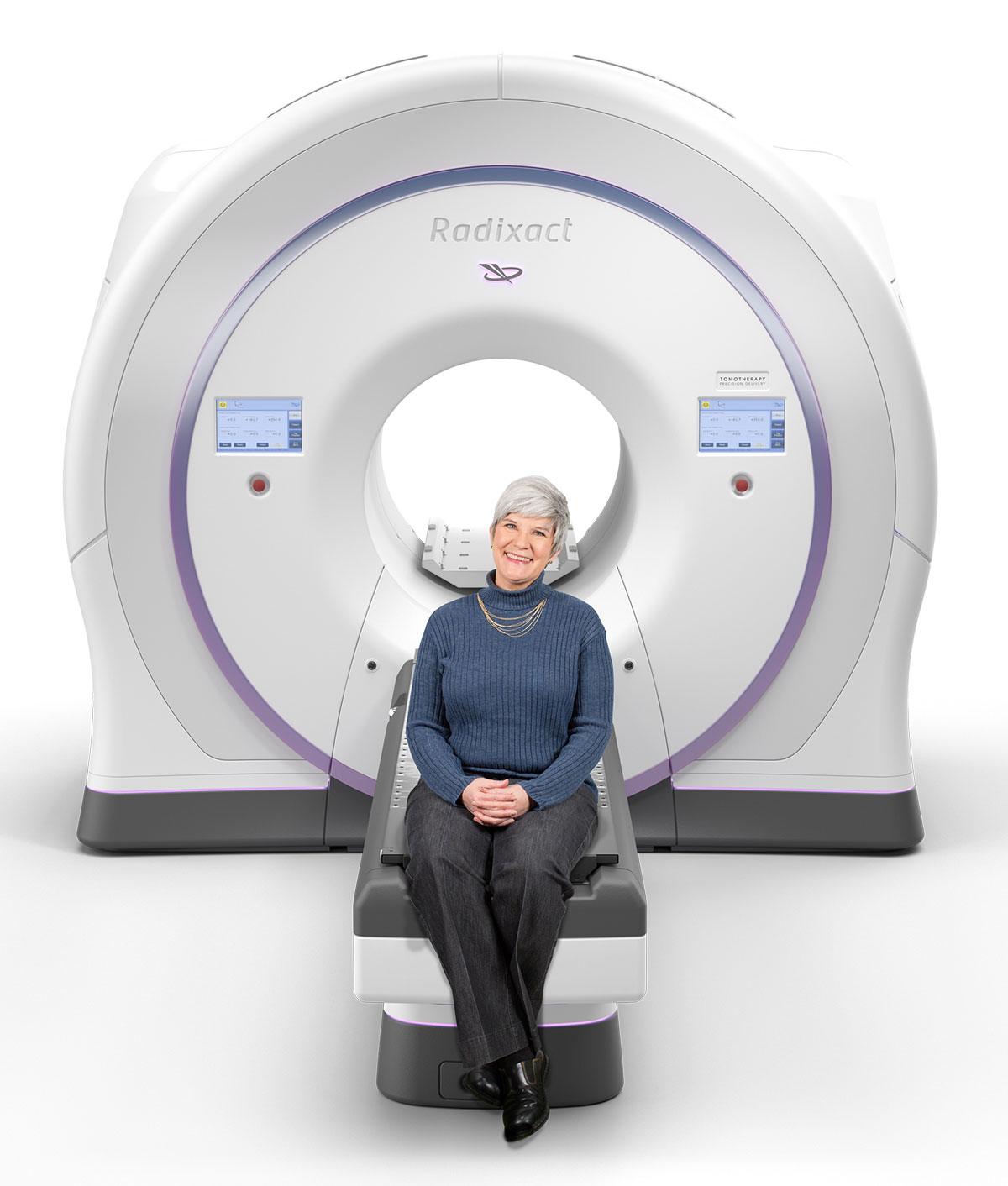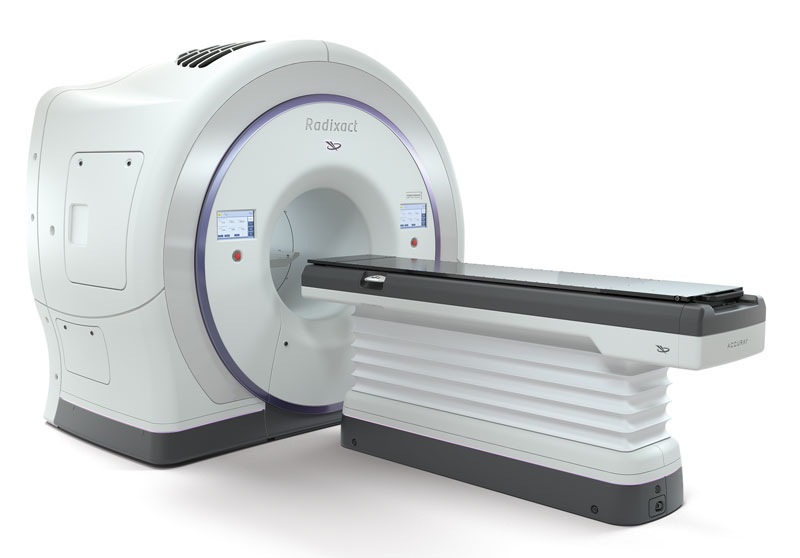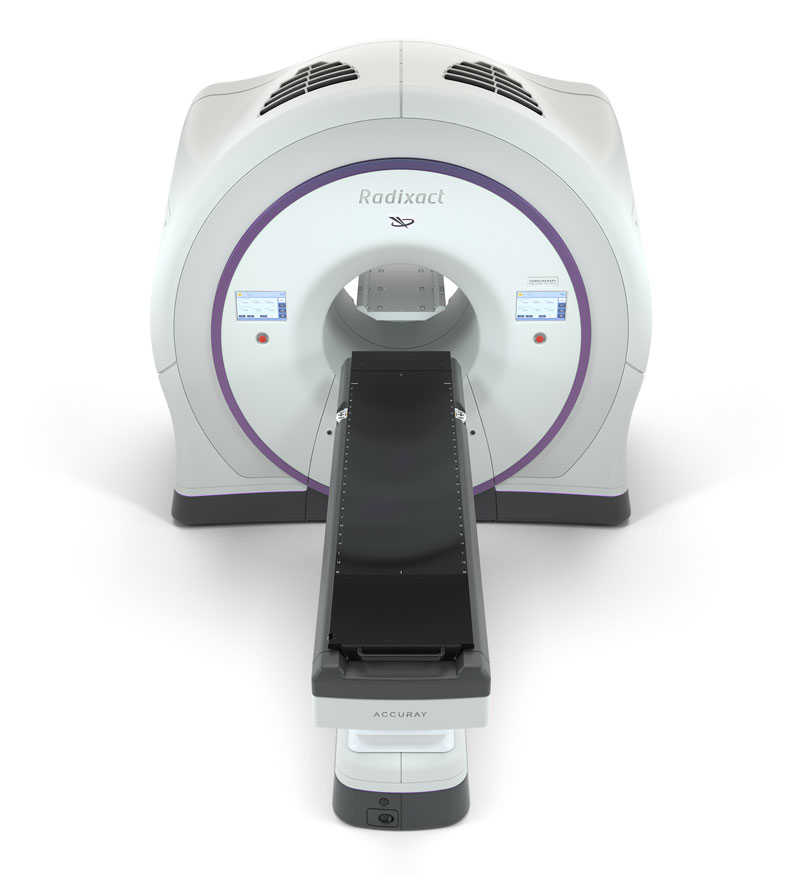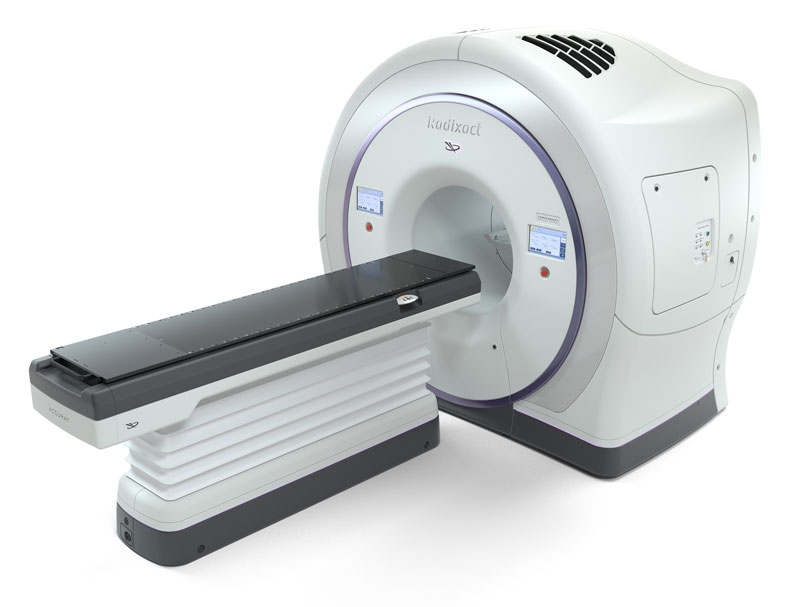Ask a physician if Radixact treatment is right for you
You deserve the best possible treatment for your rectal cancer. Find a physician in your area offering the Radixact System — and find out if Radixact treatment is right for you.
Advances in care mean there are more options than ever for people diagnosed with rectal cancer. The first step in treating locally advanced rectal cancer is typically radiation therapy and chemotherapy, when the patient is healthy enough for both. Innovations in radiation therapy will help to ensure patients receive the most effective treatment for their particular medical condition. The Radixact® System, the next-generation TomoTherapy® platform, is the first in the world that is capable of helical radiation delivery – continuously delivering high-quality helical fan-beam imaging for accurate image-guided, intensity-modulated radiation therapy (IG-IMRT) from multiple 360-degrees rotations around your body – providing a highly precise, personalized and non-invasive option for treating advanced rectal cancer.
Radiation therapy is a proven treatment for locally advanced rectal cancer and is typically used before surgery – with or without chemotherapy – to reduce the size of the tumor, with the ultimate goal of curing the disease. However, radiation delivered to surrounding organs, such as the bowel and bladder, may lead to life-changing side effects, making it critically important for the radiation to be delivered with extreme accuracy and precision. The Radixact System, featuring TomoTherapy technology, combines multiple 360-degree treatment delivery with powerful dose-sculpting capabilities, providing greater control of the radiation dose so it conforms precisely to the tumor and helps minimize damage to healthy tissues. The result is a radiation therapy treatment that maximizes effectiveness while helping to preserve gastrointestinal and genitourinary function, which may lead to better quality of life for patients both during and after treatment.

You deserve the best possible treatment for your rectal cancer. Find a physician in your area offering the Radixact System — and find out if Radixact treatment is right for you.
Clinically Proven Outcomes
IG-IMRT: A More Precise Approach
A Non-Invasive Option
Enabling Re-Treatment
The Radixact System with TomoTherapy technology is one of the most integrated, advanced systems for comprehensive cancer treatment available today and is typically used to treat locally advanced rectal cancer. Studies conducted using the TomoTherapy technology have shown good results:

Radiation therapy can provide a non-surgical, non-invasive treatment option for many rectal cancer patients, typically for locally advanced cases. An extremely precise type of radiation therapy, called image-guided, intensity-modulated radiation therapy (IG-IMRT), may offer precise dose-delivery to enhance treatment efficacy while helping to reduce the risk of effects.
The TomoTherapy platform, including the next-generation Radixact System, is the only system designed from the ground up to deliver IG-IMRT and was the first to feature helical radiation delivery and integrated CT imaging – providing greater control of the radiation dose so it conforms precisely to the tumor and helps minimize dose to healthy tissue.
Instead of a single beam of radiation, the TomoTherapy platform divides each beam into many smaller, narrow “beamlets.” Every beamlet is individually optimized to a specific intensity of radiation that is targeted at the tumor, enabling customized and precise treatment delivery. Thousands of these beamlets combine in the tumor to contribute to the total radiation dose each patient has been uniquely prescribed. This is called intensity-modulated radiation therapy (IMRT). An enhanced form of IMRT – image-guided intensity-modulated radiation therapy
(IG-IMRT) – uses images acquired before each treatment to help ensure accurate patient and tumor positioning.

Radiation therapy combined with chemotherapy is typically the primary treatment for locally advanced rectal cancer. Radiation therapy can also be used after surgery to remove residual cancer or when there is a high risk of the tumor coming back. Your doctor may also use radiation therapy as a treatment for cancer that has recurred in the pelvis after your initial treatment, manage symptoms such as pain or bleeding, or control cancer that has spread to other areas of the body such as the bowel or bladder.
The Radixact System provides the flexibility to adapt radiation therapy to any rectal cancer patient’s anatomy, helping to enable the delivery of extremely precise and accurate radiation doses to improve treatment outcomes and help reduce the risk of side effects that may impact patients’ quality of life.
Treatment with the Radixact System is a non-surgical, non-invasive, outpatient procedure that does not require incisions or general anesthesia. Most patients will not require hospitalization or a long recovery time.

Because the precise targeting of the Radixact System significantly reduces irradiation of surrounding healthy tissues, the Radixact System can be used in some particular cases as a treatment option for patients who have previously undergone radiation or surgical procedures, and those who experience a recurrence.

References:
[1] De Bari, B., Franzetti-Pellanda, A., Saidi, A. et al. Neoadjuvant chemoradiotherapy delivered with helical tomotherapy under daily image guidance for rectal cancer patients: efficacy and safety in a large, multi-institutional series. J Cancer Res Clin Oncol 145, 1075–1084 (2019).
[2] Zhao, J., Liu, X., Wang, W. et al. Concomitant dose escalation with image-guided Tomotherapy in locally advanced mid–low rectal cancer: a single-center study. ted. Cancer Management and Research 2019:11 1579–1586.
[3] Sauer R, et al: Preoperative versus Postoperative Chemoradiotherapy for Rectal Cancer. N Engl J Med. 2004 Oct 21;351(17):1731-40.